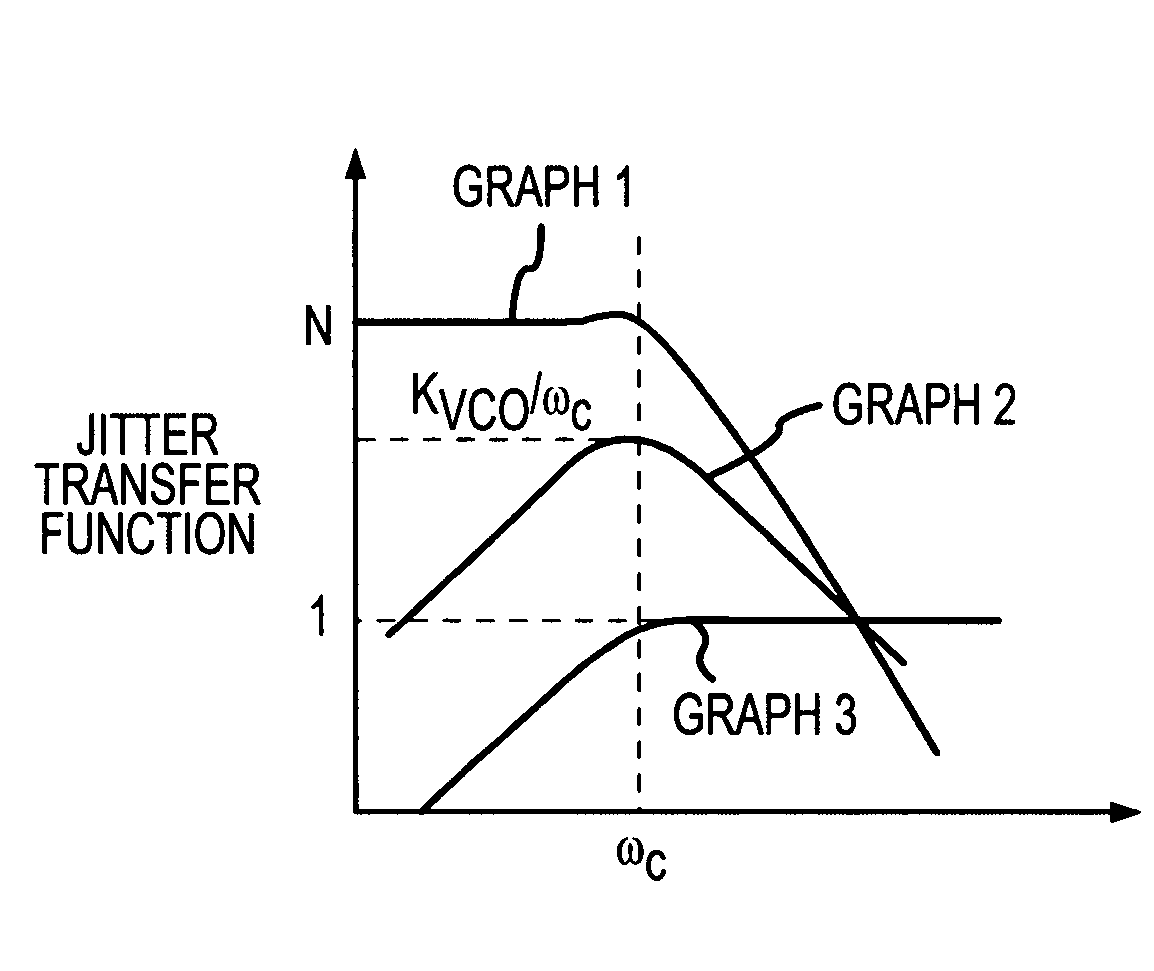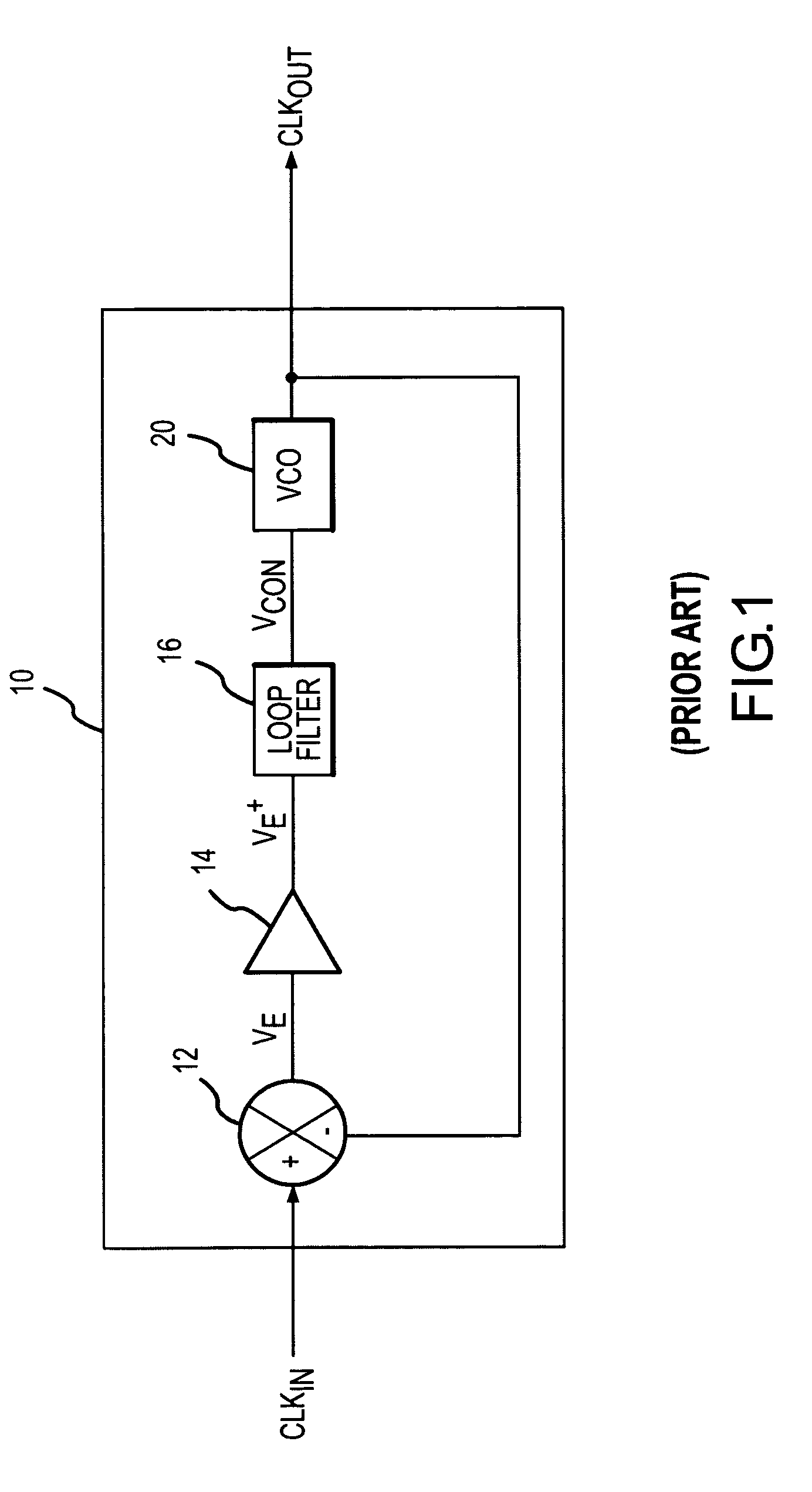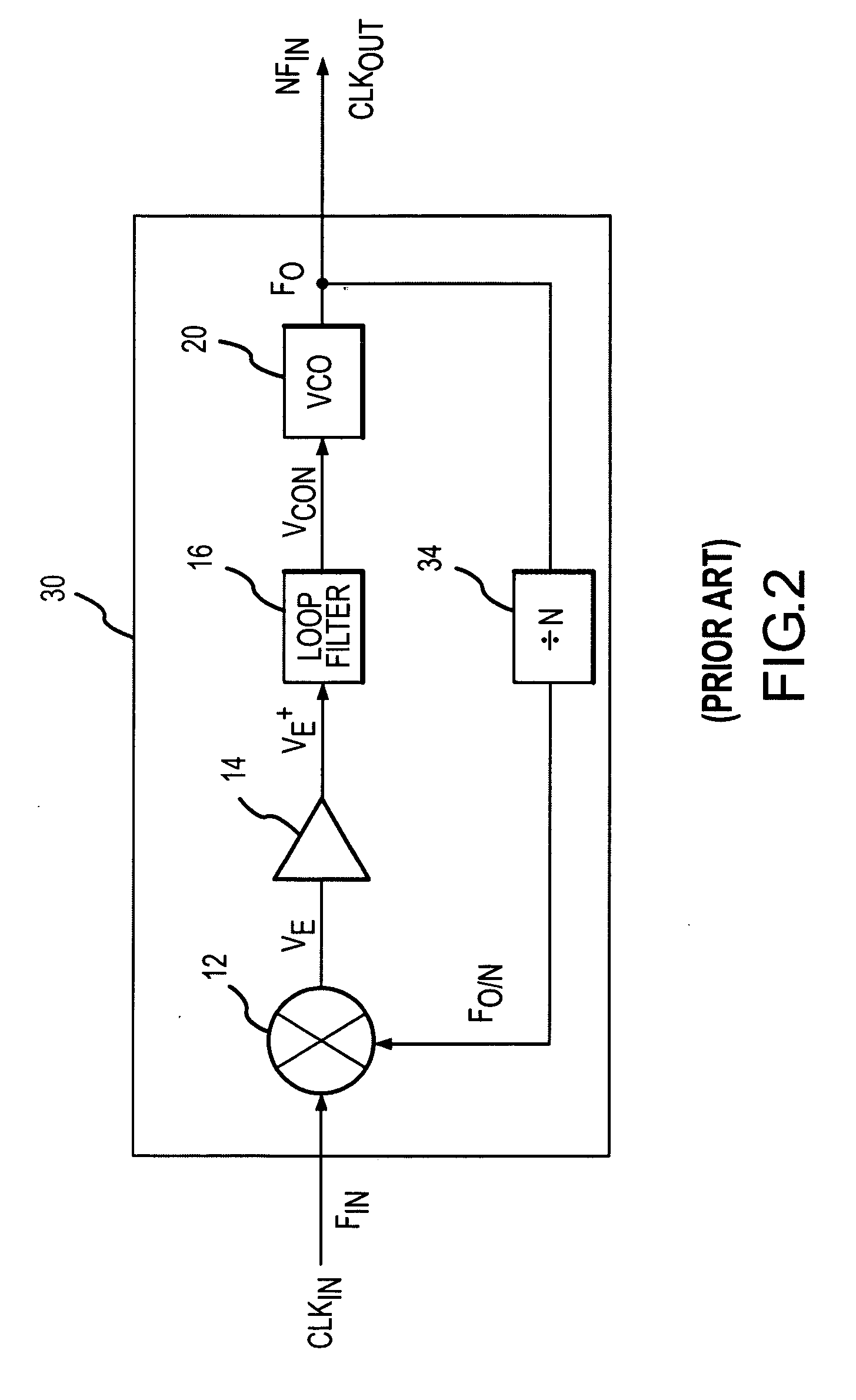Low power and low timing jitter phase-lock loop and method
- Summary
- Abstract
- Description
- Claims
- Application Information
AI Technical Summary
Benefits of technology
Problems solved by technology
Method used
Image
Examples
Embodiment Construction
[0029] One embodiment of a phase-lock loop circuit 40 for generating an output clock signal CLKOUT from an input clock signal CLKIN in accordance with the present invention is shown in FIG. 5. The phase-lock loop 40 is similar in structure and operation to the phase-lock loop 10 of FIG. 1. Therefore, in the interest of brevity, identical components have been provided with the same reference numerals, and an explanation of their function and operation will not be repeated. The phase-lock loop 40 differs from the phase-lock loops 10, 30 by including a frequency multiplier 44 in the signal path from the VCO 20 to the phase detector 12. Also, the signal VOUT generated by the phase-lock loop 40 is taken at the output of the frequency multiplier 44 rather than at the output of the VCO 20 as in the phase-lock loop 30 of FIG. 2. The frequency multipler 44 is programmable to multiply the frequency of the signal at the output of the VCO 20 by any integer value N. Therefore, if the signal at t...
PUM
 Login to View More
Login to View More Abstract
Description
Claims
Application Information
 Login to View More
Login to View More - R&D
- Intellectual Property
- Life Sciences
- Materials
- Tech Scout
- Unparalleled Data Quality
- Higher Quality Content
- 60% Fewer Hallucinations
Browse by: Latest US Patents, China's latest patents, Technical Efficacy Thesaurus, Application Domain, Technology Topic, Popular Technical Reports.
© 2025 PatSnap. All rights reserved.Legal|Privacy policy|Modern Slavery Act Transparency Statement|Sitemap|About US| Contact US: help@patsnap.com



